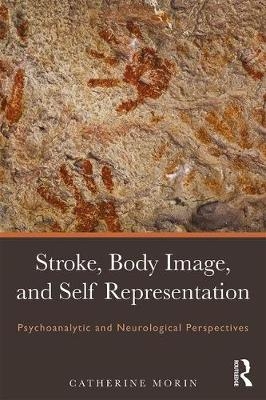
Stroke, Body Image, and Self Representation
Routledge (Verlag)
978-1-138-93366-8 (ISBN)
The author's original data sheds an entirely new light on the subjective effects of a stroke. On the one hand, the permanent sequelae of a stroke can cause a narcissistic injury; on the other, a stroke may affect the brain circuitry involved in the patient's body image, undoing the normal narcissistic reactions. This may happen after right hemisphere lesions and cause spectacular symptoms, such as the personification of a paralyzed hand or the apparent ignorance of a severe paralysis. This double aspect of a stroke is no small problem for rehabilitation therapists, who must avoid two pitfalls: considering any issue as psychological in nature, as if the brain lesion could not produce any organic changes, or, on the contrary, attributing any behavioural problems to brain dysfunction, as if the patient was devoid of normal psychological reactions. One of the aims of this book is to help therapists gaining their bearings in this little-known field.
In addition to this clinical interest, the author's psychoanalytic reading brings an original contribution to the physiopathology of cognition and self-representation. The data gathered by Catherine Morin show that self-representation cannot be considered only a cognitive operation. They also suggest that normal cognitive activity relies on both the stability of body image and the repression of the object. Stroke, Body Image, and Self Representation will appeal to psychoanalysts, psychologists, social workers, psychotherapists, psychiatrists, and rehabilitation therapists working with stroke survivors and patients with body image disorders.
Catherine Morin is a neurologist and a researcher (INSERM) with neurophysiological and psychoanalytic training. She has been involved in the rehabilitation process of stroke patients at the Rehabilitation department in the Hôpital Pitié-Salpetrière in Paris from 1972 to 2010. Since 1983, both her clinical and research work have been on body image and body schema disorders after a stroke. She is a member of Association Lacanienne Internationale and of the International Society of Neuropsychoanalysis.
Foreword by D. Caine; Introduction; 1. Body Schema 2. Body Image 3. The Subjective Effects of Stroke and The Specificity Of Brain Lesions. Methods 4. The Psychological Effects of Stroke in Patients Without Body Schema Disorders 5. The Psychological Effects of Stroke in Patients With Body Schema Disorders 6. Case Studies. Personification of The Hand, Broken Up Body, Orality Disorders, Aggressivness And Transitivism. 7. Right Hemispheric Syndrome. Physiopathological Hypothesis 8. Anosognosia 9. Right Hemispheric Syndrome and Pathological Mourning; Conclusion
| Erscheinungsdatum | 12.10.2017 |
|---|---|
| Zusatzinfo | 26 Halftones, black and white; 26 Illustrations, black and white |
| Verlagsort | London |
| Sprache | englisch |
| Maße | 156 x 234 mm |
| Gewicht | 249 g |
| Themenwelt | Sachbuch/Ratgeber ► Gesundheit / Leben / Psychologie |
| Geisteswissenschaften ► Psychologie ► Biopsychologie / Neurowissenschaften | |
| Geisteswissenschaften ► Psychologie ► Psychoanalyse / Tiefenpsychologie | |
| Medizin / Pharmazie ► Medizinische Fachgebiete ► Neurologie | |
| Medizin / Pharmazie ► Medizinische Fachgebiete ► Notfallmedizin | |
| Medizin / Pharmazie ► Medizinische Fachgebiete ► Psychiatrie / Psychotherapie | |
| Medizin / Pharmazie ► Physiotherapie / Ergotherapie ► Rehabilitation | |
| ISBN-10 | 1-138-93366-X / 113893366X |
| ISBN-13 | 978-1-138-93366-8 / 9781138933668 |
| Zustand | Neuware |
| Informationen gemäß Produktsicherheitsverordnung (GPSR) | |
| Haben Sie eine Frage zum Produkt? |
aus dem Bereich


